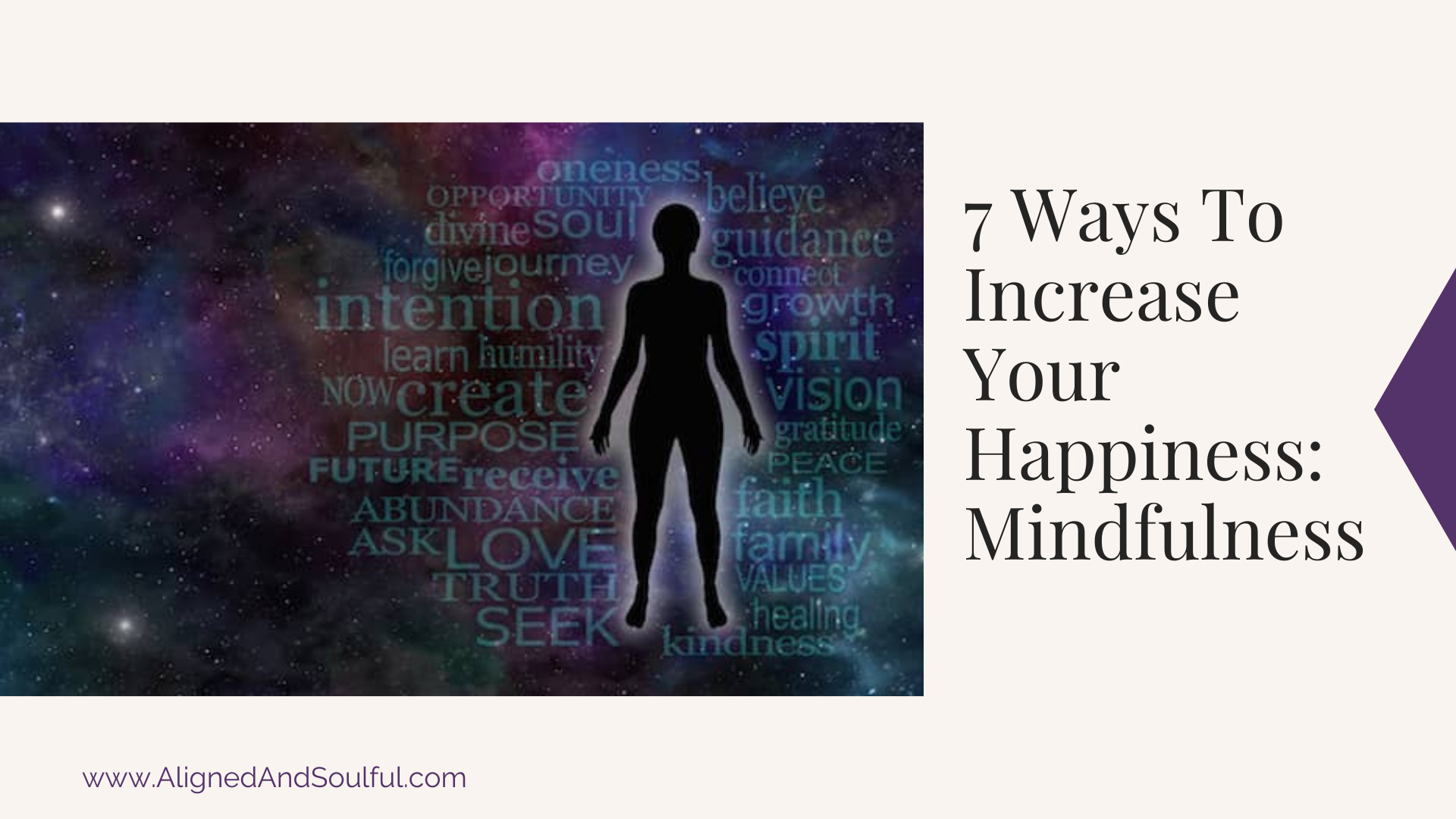I am continuing my blog series on strategies for increasing happiness. My original post was entitled “7 ways to Increase Happiness” in case you haven’t had a chance to read that post. Each week I am going deeper into each suggestion that I discussed in this original post.
This week I am exploring mindfulness. Mindfulness is a term we hear everywhere and is used very often in media. What does mindfulness mean? According to Merriam-Webster online, mindfulness means: : “the practice of maintaining a nonjudgmental state of heightened or complete awareness of one’s thoughts, emotions, or experiences on a moment-to-moment basis; also : such a state of awareness.” Awareness is the theme of this definition. Another way I like to describe mindfulness is being present to where you are and actually “in your body.” When you are actually in your body you are able to feel aches and pains as well as emotions. When you are mindful you are aware of all the elements in your environment. In order to further illustrate mindfulness I will give you some examples. Here are a couple of common scenarios.
Scenario 1: Your friend/partner/child is describing a situation to you, while you are listening you think about what you should say next or wonder when they will finish their thought so you can go do the next thing on your list. Obviously, this is not being mindful… Being mindful in the same scenario would involve really listening to the person, observing their facial expressions and really seeing them, maybe even feeling their energy. When they are done then you take a moment to ask andy clarifying questions, mirror what they said to you and if there is anything you can do to help.
Scenario 2: You are walking down the street and are lost in thought. Your mind is thinking about all that you have to do today or you are looking at your phone while walking. If you were being mindful you would take your walk, with our without music, and feel how your body is moving, how your feet hit the floor, and pay attention to your breath. You may even be grateful to be alive today.
These are two simple examples that clarify mindfulness in daily living. What is something that you can change in your life to go from distracted to mindful. Start with a simple task, and as you see the benefit it will be easy to implement throughout your life. You may be wondering how does mindfulness help increase happiness. As you become more connected to yourself and the people around you, you will be happier. When you go through your day focusing instead of multi-tasking, your stress level will decrease and you will be happier. These are just two ways that mindfulness can increase your happiness.
If you are having trouble being mindful. Meditation is a great way to increase your mindfulness throughout your day. You can simply take a few deep breaths throughout your day to start. I challenge you to try to be mindful in one activity today and see how it feels different.
If you would like help increasing your happiness/mindfulness, please contact me for a complimentary clarity session.
